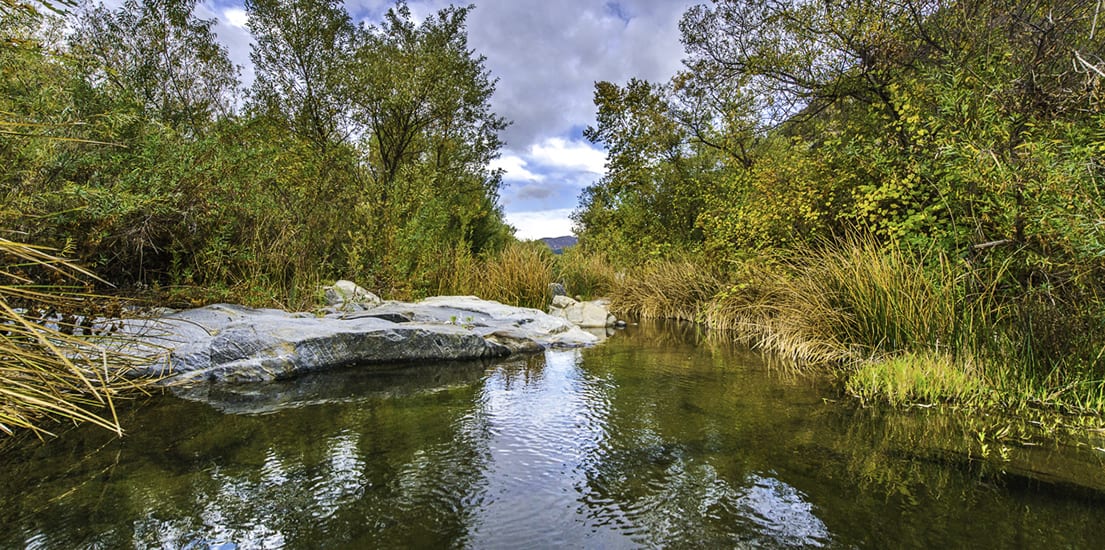This month, Western Rivers Conservancy made an important move toward conserving a key stretch of the Santa Margarita, one of the last free-flowing rivers in Southern California. By committing to purchase 1,384 acres of riverland we moved one step closer to creating an unbroken habitat corridor and a critical ecological link between the inland high desert, coastal Santa Ana Mountains and the Pacific Ocean.
The Santa Margarita drains an arid region. It begins at the confluence of Murrieta Creek and Temecula Creek in Riverside County, before it carves through desert canyons and flows into its large floodplain at Camp Pendleton. Finally, the river enters the Pacific Ocean near Oceanside, just north of the Del Mar Marina.
With a higher flow than other streams in the region, the Santa Margarita provides key habitat for endangered Southern California steelhead. Camp Pendleton biologists have documented a remnant steelhead run in the lower river in recent years, and NOAA Fisheries ranks it as a Core 1 river, its highest priority rating for steelhead recovery. This alone gives the Santa Margarita national significance. The river also supports remnant populations of arroyo chub, a tiny omnivorous fish that’s disappearing from other California coastal streams.
The Santa Margarita nourishes a vast array of plants and wildlife, including the highest diversity and density of bird species in the Southern California coastal region. Birders regularly hike the river corridor, and the luckiest spot life-list species like endangered least Bell’s vireo, endangered southwestern willow flycatcher and the threatened California gnatcatcher.
WRC’s acquisition of these lands, which we will purchase from Fallbrook Public Utility District, will conserve five miles of the Santa Margarita and nearly two miles of Sandia Creek, a key tributary.
We are proud to be part of strengthening a vital link in a rare habitat corridor, and to launch a project that will benefit not just fish and wildlife, but the people of Southern California. Our efforts will help ensure compatible public access to a place that people have come to love, and to which they return to bird-watch, ride horses and walk along the banks of a clean and free-flowing river.


